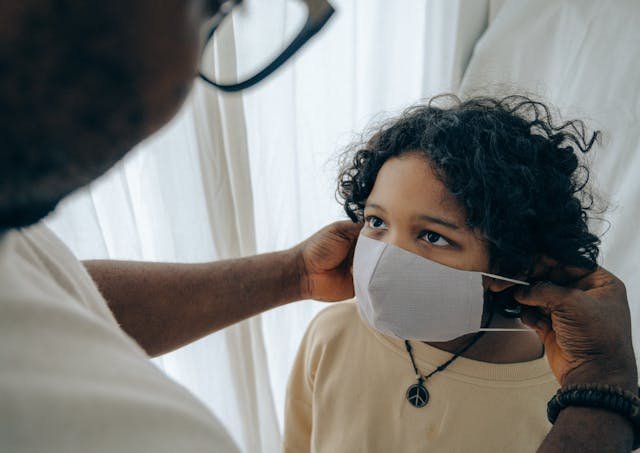

Basic Medical Greetings and Introductions in Norwegian: A Comprehensive Guide for Healthcare Professionals
Table of Contents
ToggleIntroduction
In the ever-evolving landscape of global healthcare, the ability to communicate effectively across language barriers has become increasingly crucial. For medical professionals working in Norway or with Norwegian-speaking patients, mastering basic greetings and introductions in Norwegian is not just a courtesy—it’s an essential skill that can significantly enhance patient care, build trust, and improve overall healthcare outcomes.
This comprehensive guide aims to provide healthcare professionals with a solid foundation in Norwegian medical greetings and introductions. We’ll cover a wide range of phrases and cultural considerations, equipping you with the tools you need to navigate various healthcare settings and situations with confidence and cultural sensitivity.
The Importance of Language in Healthcare
Before we delve into specific phrases and linguistic nuances, it’s crucial to understand why learning these greetings and introductions is so vital in a medical context:
- Patient Comfort: When patients hear their native language in a medical setting, it can dramatically reduce anxiety and stress. This is particularly important in healthcare, where patients are often in vulnerable situations. Speaking even a few words of Norwegian can help create a more welcoming and comfortable environment for your patients.
- Accurate Communication: In medicine, precision is paramount. Using the correct terms and phrases in Norwegian reduces the risk of misunderstandings that could potentially lead to medical errors. Even if you’re not fluent, knowing key phrases can help you gather critical information more accurately.
- Cultural Competence: Language and culture are deeply intertwined. By making an effort to speak Norwegian, you demonstrate respect for your patients’ cultural background. This cultural sensitivity can lead to better patient engagement and adherence to treatment plans.
- Building Trust: Trust is the cornerstone of the doctor-patient relationship. Patients are more likely to open up, provide accurate information, and follow medical advice when they feel understood and respected. Speaking their language, even at a basic level, can help foster this crucial trust.
- Legal and Ethical Considerations: In many cases, ensuring that patients fully understand their medical situation and treatment options is not just good practice—it’s a legal and ethical requirement. While professional interpreters should be used for complex discussions, having basic language skills can help you ensure that patients are properly informed and consenting.
- Efficiency: In busy healthcare settings, time is often of the essence. Basic language skills can help you navigate simple interactions more quickly, potentially saving time in situations where an interpreter isn’t immediately available.
- Professional Development: Learning medical Norwegian can open up new career opportunities, whether in Norway or in institutions that serve Norwegian-speaking populations elsewhere.
Basic Greetings
In Norwegian, as in many languages, greetings can vary based on the time of day and the level of formality required. Here’s a detailed look at various greetings you might use in a medical setting:
Formal Greetings
- “God dag” (Good day) This is a formal greeting suitable for most medical encounters. It’s neutral in terms of time of day and shows respect to the patient. Use this when you’re unsure about which greeting to choose.
- “God morgen” (Good morning) Use this greeting before noon. It’s a pleasant way to start the day with your patients or colleagues.
- “God ettermiddag” (Good afternoon) This greeting is appropriate from noon until early evening, typically around 5 or 6 PM.
- “God kveld” (Good evening) Use this greeting in the evening hours. In a medical context, this might be used in emergency rooms or for evening consultations.
Informal Greetings
While it’s generally best to err on the side of formality in medical settings, there may be situations where a more casual greeting is appropriate:
- “Hei” (Hi/Hello) This casual greeting can be used in less formal settings or with younger patients. It’s versatile and can be used at any time of day.
- “Hallo” (Hello) Another informal greeting, similar to “Hei.” It’s slightly less common but still widely understood.
Parting Phrases
Knowing how to properly end an interaction is just as important as knowing how to start one:
- “Ha det bra” (Goodbye, literally “Have it good”) This is the most common way to say goodbye in Norwegian. It’s suitable for most situations.
- “Farvel” (Farewell) This is a more formal goodbye, less commonly used in everyday situations but might be appropriate in more serious medical contexts.
- “Vi ses” (See you later) A casual way of saying goodbye, implying that you’ll see the person again. This could be appropriate when scheduling follow-up appointments.
- “God bedring” (Get well soon) While not a goodbye per se, this is a crucial phrase for healthcare professionals to know. Use it to wish your patients a speedy recovery as they leave.
Introducing Yourself
In a medical setting, clear self-introduction is crucial. It helps establish your role and begins to build the patient-provider relationship. Here are some phrases you can use:
- “Jeg heter [your name]” (My name is [your name]) This is the most straightforward way to introduce yourself.
- “Mitt navn er [your name]” (My name is [your name]) This is slightly more formal than “Jeg heter” and might be preferred in more serious situations.
- “Jeg er [your profession]” (I am [your profession]) It’s important to clearly state your role in the patient’s care.
Examples:
- “Jeg heter Maria, og jeg er lege.” (My name is Maria, and I am a doctor.)
- “Mitt navn er Anders, og jeg er sykepleier.” (My name is Anders, and I am a nurse.)
- “Jeg heter Sofie, og jeg er fysioterapeut.” (My name is Sofie, and I am a physiotherapist.)
It’s also helpful to explain your specific role in the patient’s care:
- “Jeg er turnuslegen som skal undersøke deg i dag.” (I am the intern who will examine you today.)
- “Jeg er spesialist i kardiologi og er her for å vurdere hjertet ditt.” (I am a cardiology specialist and I’m here to evaluate your heart.)
Asking for the Patient’s Name
After introducing yourself, you’ll want to ask for the patient’s name. This helps personalize the interaction and ensures you’re addressing the correct patient. Here are some ways to do this:
- “Hva heter du?” (What is your name?) This is the most direct way to ask for someone’s name.
- “Kan du si meg navnet ditt?” (Can you tell me your name?) This is a slightly more polite way to ask for a name.
- “Hvilket navn står du registrert med?” (What name are you registered under?) This can be useful in a hospital or clinic setting where patients are pre-registered.
- “Kan du bekrefte navnet ditt for meg?” (Can you confirm your name for me?) This is useful for double-checking that you have the correct patient.
It’s also important to verify other identifying information:
- “Kan du bekrefte fødselsdatoen din?” (Can you confirm your date of birth?)
- “Hva er adressen din?” (What is your address?)
Remember to thank the patient for providing this information:
- “Takk for informasjonen.” (Thank you for the information.)
Explaining Your Role
Clearly explaining your role to the patient is crucial for establishing trust and setting expectations. Here are some useful phrases:
- “Jeg er [your profession] og skal [action].” (I am [your profession] and will [action].)
- “I dag skal jeg [action].” (Today, I will [action].)
- “Min rolle er å [responsibility].” (My role is to [responsibility].)
Examples:
- “Jeg er lege og skal undersøke deg i dag.” (I am a doctor and will examine you today.)
- “Jeg er sykepleier og skal ta blodprøver av deg.” (I am a nurse and will take blood samples from you.)
- “Min rolle er å vurdere ditt behov for fysioterapi.” (My role is to assess your need for physiotherapy.)
It’s also helpful to explain the purpose of your interaction:
- “Formålet med denne undersøkelsen er å [purpose].” (The purpose of this examination is to [purpose].)
- “Vi gjør dette for å [reason].” (We’re doing this to [reason].)
Asking about the Patient’s Condition
Once introductions are complete, you’ll need to inquire about the patient’s condition. This is a critical part of the medical interaction. Here are some useful phrases:
- “Hvordan har du det i dag?” (How are you feeling today?) This is a general question to start the conversation about the patient’s health.
- “Hva kan jeg hjelpe deg med?” (What can I help you with?) This open-ended question allows the patient to express their main concerns.
- “Kan du fortelle meg om problemene dine?” (Can you tell me about your problems?) This encourages the patient to describe their symptoms or issues in detail.
- “Når begynte symptomene?” (When did the symptoms start?) This helps establish a timeline for the patient’s condition.
- “Har du noen smerter?” (Do you have any pain?) This direct question about pain is often crucial in medical assessments.
- “På en skala fra 1 til 10, hvor 10 er verst, hvordan vil du beskrive smerten?” (On a scale from 1 to 10, where 10 is the worst, how would you describe the pain?) This helps quantify the patient’s pain level.
- “Har du hatt lignende symptomer tidligere?” (Have you had similar symptoms before?) This question can help identify recurring issues or patterns.
- “Er det noe som forverrer eller forbedrer symptomene?” (Is there anything that makes the symptoms worse or better?) This can provide valuable information about the nature of the condition.
- “Har du noen andre helseproblemer?” (Do you have any other health issues?) This helps gather a comprehensive health history.
- “Tar du noen medisiner regelmessig?” (Are you taking any medications regularly?) This is crucial for understanding the patient’s current treatments and potential drug interactions.
Expressing Empathy and Understanding
Showing empathy is crucial in medical interactions. It helps build trust and can make patients more comfortable sharing important information. Here are some phrases to express understanding and concern:
- “Jeg forstår at dette må være vanskelig for deg.” (I understand this must be difficult for you.) This acknowledges the patient’s emotional state.
- “Det høres ut som en utfordrende situasjon.” (That sounds like a challenging situation.) This validates the patient’s experience.
- “Jeg er her for å hjelpe deg.” (I’m here to help you.) This reassures the patient of your support.
- “Det er forståelig at du føler det slik.” (It’s understandable that you feel this way.) This normalizes the patient’s emotional response.
- “Takk for at du deler dette med meg.” (Thank you for sharing this with me.) This acknowledges the patient’s openness.
- “Vi skal gjøre vårt beste for å hjelpe deg.” (We’ll do our best to help you.) This offers reassurance and commitment to the patient’s care.
- “Ikke nøl med å fortelle meg hvis noe er uklart eller bekymrer deg.” (Don’t hesitate to tell me if anything is unclear or worries you.) This encourages open communication.
Giving Instructions
As a healthcare provider, you’ll often need to give instructions to patients. Clear, concise instructions are crucial for proper care and treatment. Here are some useful phrases:
- “Vennligst følg meg.” (Please follow me.) Use this when guiding a patient to an examination room or other area.
- “Kan du vente her?” (Can you wait here?) Useful when you need the patient to stay in a specific location.
- “Vennligst kle av deg overkroppen.” (Please undress your upper body.) Be clear about what level of undressing is necessary for the examination.
- “Ta en dyp pust.” (Take a deep breath.) Common instruction during physical examinations.
- “Hold pusten.” (Hold your breath.) Often used during x-rays or similar procedures.
- “Slapp av.” (Relax.) Important for many examinations and procedures.
- “Dette kan gjøre litt vondt.” (This might hurt a little.) It’s important to prepare patients for potential discomfort.
- “Si ifra hvis du kjenner smerte.” (Let me know if you feel pain.) This encourages the patient to communicate during procedures.
- “Ikke spis eller drikk noe i 8 timer før undersøkelsen.” (Don’t eat or drink anything for 8 hours before the examination.) Clear instructions for procedures requiring fasting are crucial.
- “Ta denne medisinen to ganger om dagen med mat.” (Take this medication twice a day with food.) Precise instructions for medication are vital for proper treatment.
Asking for Consent
Obtaining informed consent is a crucial part of medical practice. It’s important to ensure that patients understand and agree to procedures or treatments. Here are some phrases to use:
- “Er det greit om jeg undersøker deg?” (Is it okay if I examine you?) Always ask for permission before beginning a physical examination.
- “Gir du tillatelse til at vi utfører denne prosedyren?” (Do you give permission for us to perform this procedure?) This is a more formal way of asking for consent for a specific procedure.
- “Har du noen spørsmål før vi begynner?” (Do you have any questions before we start?) This ensures the patient has all the information they need before consenting.
- “Du har rett til å nekte denne behandlingen.” (You have the right to refuse this treatment.) It’s important to inform patients of their rights.
- “Forstår du hva denne prosedyren innebærer?” (Do you understand what this procedure involves?) This helps ensure the patient has a clear understanding before consenting.
- “Er du komfortabel med at vi går videre?” (Are you comfortable with us proceeding?) This gives the patient an opportunity to express any reservations.
- “Jeg trenger din skriftlige tillatelse for denne prosedyren.” (I need your written permission for this procedure.) Use this when formal written consent is required.
Explaining Procedures
When explaining procedures to patients, it’s important to be clear and concise. Use simple language and be prepared to clarify any points the patient doesn’t understand. Here are some useful phrases:
- “Jeg skal nå forklare prosedyren for deg.” (I will now explain the procedure to you.) This introduces the explanation and prepares the patient to listen.
- “Først vil jeg [action], deretter vil jeg [next action].” (First, I will [action], then I will [next action].) Breaking down the procedure into steps can make it easier for patients to understand.
- “Dette tar vanligvis [time] minutter.” (This usually takes [time] minutes.) Providing a time frame can help reduce anxiety.
- “Du kan kjenne et lite ubehag, men det går fort over.” (You might feel a little discomfort, but it will pass quickly.) It’s important to be honest about potential discomfort while also reassuring the patient.
- “Under prosedyren vil du [patient’s experience].” (During the procedure, you will [patient’s experience].) This helps the patient know what to expect.
- “Etter prosedyren er det normalt å føle [common after-effects].” (After the procedure, it’s normal to feel [common after-effects].) Preparing patients for what to expect afterwards can reduce anxiety.
- “Har du noen spørsmål om prosedyren?” (Do you have any questions about the procedure?) Always give patients the opportunity to ask questions.
Discussing Test Results
Discussing test results requires clarity, sensitivity, and often, the ability to explain complex information in simple terms. Here are some phrases that might be useful:
- “Testresultatene dine er klare.” (Your test results are ready.) This introduces the topic of test results.
- “Resultatene viser at [explanation].” (The results show that [explanation].) Be clear and direct when explaining results.
- “Dette betyr at [implications].” (This means that [implications].) Help the patient understand what the results mean for their health.
- “Vi trenger å ta flere tester for å være sikre.” (We need to do more tests to be sure.) Sometimes, additional testing is necessary to confirm a diagnosis or get a clearer picture of the patient’s condition.
- “Basert på disse resultatene, anbefaler jeg [treatment/next steps].” (Based on these results, I recommend [treatment/next steps].) Provide clear guidance on what should happen next.
- “Disse resultatene er innenfor normalområdet.” (These results are within the normal range.) Reassure patients when results are normal.
- “La meg forklare hva disse tallene betyr.” (Let me explain what these numbers mean.) Offer to break down complex information into more understandable terms.
- “Har du noen spørsmål om resultatene?” (Do you have any questions about the results?) Always give patients the opportunity to ask for clarification.
- “Jeg forstår at dette kan være overveldende. Ta deg tid til å fordøye informasjonen.” (I understand this can be overwhelming. Take time to digest the information.) Acknowledge that receiving test results can be emotionally challenging.
- “Vi kan diskutere disse resultatene mer detaljert ved neste konsultasjon.” (We can discuss these results in more detail at your next consultation.) Sometimes, patients need time to process information before discussing it further.
Prescribing Medication
When prescribing medication, clear instructions are crucial for patient safety and treatment efficacy. Here are some useful phrases:
- “Jeg skriver ut en resept på [medication].” (I’m prescribing [medication].) Clearly state what medication you’re prescribing.
- “Ta [number] tabletter [frequency].” (Take [number] tablets [frequency].) Be specific about dosage and frequency.
- “Ta medisinen med mat.” (Take the medicine with food.) Provide instructions on how to take the medication.
- “Unngå alkohol mens du tar denne medisinen.” (Avoid alcohol while taking this medicine.) Warn about potential interactions or contraindications.
- “Hvis du opplever bivirkninger, ta kontakt med legen din.” (If you experience side effects, contact your doctor.) Instruct patients on what to do if they experience adverse effects.
- “Fortsett å ta medisinen selv om du føler deg bedre.” (Continue taking the medicine even if you feel better.) This is crucial for antibiotics and other medications that require a full course.
- “Denne medisinen kan gjøre deg døsig. Unngå å kjøre bil.” (This medication can make you drowsy. Avoid driving.) Warn about potential side effects that could impact daily activities.
- “Har du noen allergier mot medisiner?” (Do you have any medication allergies?) Always check for allergies before prescribing.
- “Denne medisinen kan påvirke [other medications/conditions]. Er du klar over det?” (This medication can affect [other medications/conditions]. Are you aware of that?) Inform patients about potential interactions with other medications or health conditions.
- “La meg forklare hvordan du bruker denne inhalatoren/injeksjonen/kremen.” (Let me explain how to use this inhaler/injection/cream.) Provide detailed instructions for medications that require special administration.
Scheduling Follow-up Appointments
Arranging follow-up care is often necessary to monitor a patient’s progress or adjust treatment plans. Here are some phrases to use:
- “Vi bør sette opp en ny time om [time period].” (We should schedule another appointment in [time period].) Suggest a timeframe for the next appointment.
- “Kan du komme tilbake neste uke?” (Can you come back next week?) For more urgent follow-ups, suggest a specific time.
- “Ring oss hvis symptomene forverres.” (Call us if the symptoms worsen.) Instruct patients on when to seek immediate care.
- “La oss avtale en kontroll om tre måneder.” (Let’s arrange a check-up in three months.) For longer-term follow-ups.
- “Husk å ta med deg alle medisiner til neste konsultasjon.” (Remember to bring all your medications to the next consultation.) Remind patients what to bring to their next appointment.
- “Du vil motta en påminnelse på SMS dagen før avtalen.” (You will receive a reminder by SMS the day before the appointment.) Inform patients about appointment reminders.
- “Hvis du trenger å endre timen, vennligst gi beskjed minst 24 timer i forveien.” (If you need to change the appointment, please let us know at least 24 hours in advance.) Explain the policy for rescheduling appointments.
Addressing Concerns and Answering Questions
Patients often have concerns or questions about their health, treatment, or prognosis. Encouraging and addressing these questions is crucial for patient engagement and compliance. Here are some phrases to use:
- “Har du noen spørsmål?” (Do you have any questions?) This open-ended question invites patients to express their concerns.
- “Er det noe du lurer på?” (Is there anything you’re wondering about?) An alternative way to encourage questions.
- “Ikke nøl med å spørre hvis noe er uklart.” (Don’t hesitate to ask if anything is unclear.) Encourage patients to seek clarification.
- “La meg forklare det på en annen måte.” (Let me explain it in a different way.) Offer to rephrase if the patient doesn’t understand.
- “Det er et godt spørsmål. La meg forklare…” (That’s a good question. Let me explain…) Validate the patient’s questions to encourage further engagement.
- “Jeg forstår at du er bekymret for [issue]. La oss snakke om det.” (I understand you’re worried about [issue]. Let’s talk about it.) Acknowledge and address specific concerns.
- “Hvis du kommer på flere spørsmål senere, kan du alltid ringe oss.” (If you think of more questions later, you can always call us.) Let patients know they can seek information even after the appointment.
Cultural Considerations
When using Norwegian in a medical context, it’s important to be aware of some cultural considerations:
- Formality: Norwegians generally use a less formal tone than in many other cultures, even in professional settings. However, it’s still best to err on the side of formality, especially with older patients. Use the formal “De” instead of the informal “du” when addressing older or unfamiliar patients.
- Personal space: Norwegians typically value personal space. Be mindful of this when conducting physical examinations. Always explain what you’re going to do before touching a patient.
- Directness: Norwegian communication style tends to be direct. While empathy is important, it’s also acceptable to be straightforward about medical issues. Avoid euphemisms when discussing serious conditions.
- Egalitarianism: Norway has a strong egalitarian culture. Patients may expect to be treated as equals and to be fully involved in decisions about their care. Be prepared to explain your reasoning and consider the patient’s input.
- Privacy: Medical privacy is taken very seriously in Norway. Always ensure you have the patient’s consent before discussing their condition with family members. Be cautious about discussing patient information in public areas of the healthcare facility.
- Punctuality: Norwegians value punctuality highly. Try to stay on schedule with appointments and explain any delays to waiting patients.
- Gender equality: Norway is known for its progressive stance on gender equality. Be mindful of using gender-neutral language when appropriate and avoid making assumptions based on gender.
- Holistic approach: Many Norwegians appreciate a holistic approach to healthcare that considers lifestyle factors alongside medical treatments. Be prepared to discuss diet, exercise, and stress management as part of overall health care.
- Alternative medicine: While Norway has a strong traditional medical system, many people are also open to alternative or complementary therapies. Be respectful if patients mention using these alongside conventional treatments.
- Seasonal considerations: Norway’s extreme seasonal variations in daylight can affect mental health. Be aware of seasonal affective disorder, especially during the long, dark winters.
Conclusion
Mastering these basic medical greetings and introductions in Norwegian can significantly improve your ability to communicate effectively with Norwegian-speaking patients. Remember, language learning is an ongoing process, and your efforts to speak Norwegian will be appreciated by your patients, even if you make mistakes.
While this guide provides a solid foundation, it’s important to continue practicing and expanding your medical Norwegian vocabulary. Consider taking language courses specifically designed for healthcare professionals, or practice with Norwegian-speaking colleagues.
By making the effort to communicate in Norwegian, you’re not just facilitating better healthcare outcomes – you’re also showing respect for your patients’ culture and building stronger, more trusting relationships. This can lead to improved patient satisfaction, better adherence to treatment plans, and ultimately, better health outcomes.
Remember, effective communication in healthcare is about more than just words – it’s about creating a comfortable, trustworthy environment where patients feel heard and understood. Your efforts to speak Norwegian can go a long way in creating this positive environment.
As you continue to use these phrases and expand your Norwegian medical vocabulary, you’ll find that your interactions with Norwegian-speaking patients become smoother and more effective. Keep practicing, stay patient with yourself, and don’t be afraid to ask for help or clarification when needed. Your dedication to improving your language skills will undoubtedly benefit both you and your patients in the long run.
Learning medical Norwegian is a journey, not a destination. Each patient interaction is an opportunity to learn and improve. Embrace the challenges, celebrate the successes, and remember that every word you learn brings you closer to providing the best possible care for your Norwegian-speaking patients.
Norwegian A1-A2
The course, called Norwegian A1-A2, is an online program designed to teach you Norwegian grammar and vocabulary. You’ll engage with a variety of materials and topics including the opportunity to converse with a Norwegian teacher. All interactions with the teacher are conducted online. The curriculum covers essential Norwegian grammar and vocabulary, as well as topics like family, everyday life, education, working life, traditions, leisure activities, and much more. Who is the course for? This course is ideal for anyone starting to learn Norwegian at the A1 or A2 levels. Whether you’re a complete beginner or you already know a little Norwegian, this course is suitable for you. What do you receive? Access to the Norwegian A1-A2 course. A 1-hour online conversation with a teacher once per month. Numerous written and oral assignments. Information on grammar, spelling, vocabulary, and sentence structure. Tips on additional resources to enhance your Norwegian learning.
If you want to learn Norwegian, you can register for classes here. We look forward to hearing from you and helping you become fluent in Norwegian.






